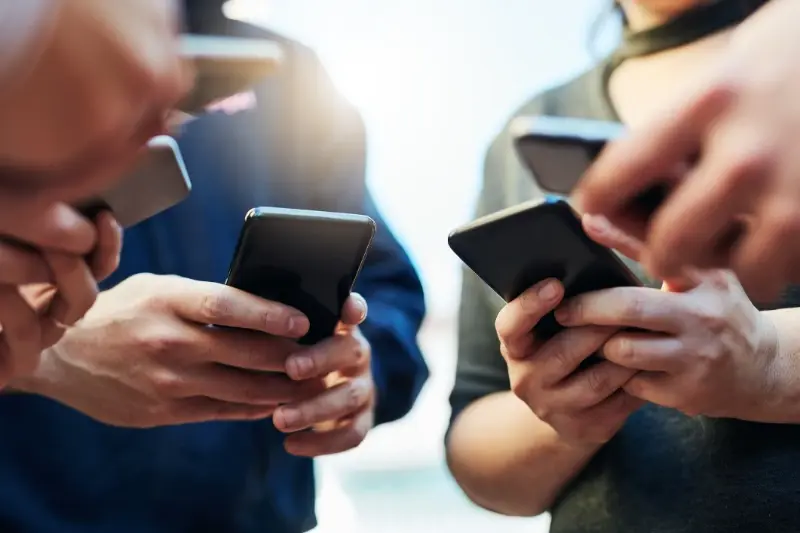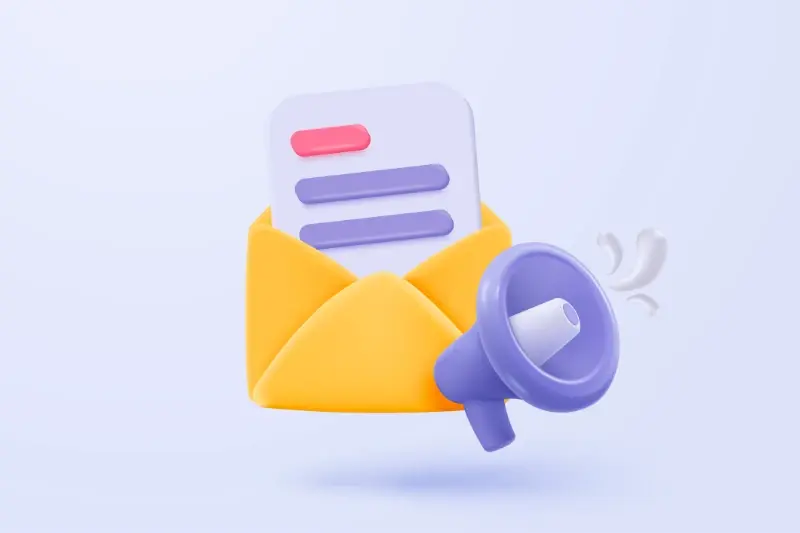The 5 Essential Email Campaigns Every App Needs
Most mobile app developers spend months perfecting their user interface, debugging code, and planning launch strategies—but completely forget about what happens after someone downloads their app. The truth is, getting people to install your mobile app is just the beginning. The real challenge starts when you need to keep them engaged, active, and coming back for more.
Email marketing remains one of the most powerful tools for mobile app success, with studies showing it can increase user retention by up to 300%. Yet many app developers treat email as an afterthought, sending random messages without any real strategy. This approach not only wastes opportunities but can actually harm your app's reputation.
The best mobile apps don't just solve problems—they build relationships with their users through consistent, valuable communication
After working with hundreds of mobile app projects, I've identified five email campaigns that every successful app needs. These aren't just nice-to-have marketing extras; they're the foundation of essential marketing that turns casual downloaders into loyal users. Whether you're launching your first app or looking to improve an existing one, these campaigns will help you build stronger connections with your audience and drive long-term success.
Welcome Messages That Create Great First Impressions
Your welcome email is the first proper conversation you'll have with your new users—and like most first impressions, you only get one shot at getting it right. I've worked with dozens of apps over the years, and I can tell you that the difference between a good welcome email and a great one often determines whether someone becomes a long-term user or deletes your app within the first week.
The best welcome messages don't just say "thanks for downloading"—they set expectations and get people excited about what comes next. You want to confirm they've made the right choice whilst giving them a clear understanding of what your app actually does for them.
What Makes Welcome Messages Work
A successful welcome email should cover these key points without overwhelming your new users:
- A warm greeting that feels personal, not robotic
- Clear confirmation of what they've signed up for
- One simple next step to get them started
- Your contact details for support questions
- A brief hint at what's coming next in your onboarding sequence
Keep it short and friendly—people are busy and their attention spans are shorter than you think. Save the detailed feature explanations for your onboarding sequence; this message just needs to make them feel good about their decision to try your app.
Onboarding Sequences That Help Users Succeed
Getting someone to download your mobile app is just the beginning—the real challenge starts when they open it for the first time. Most people will decide within the first few minutes whether your app is worth keeping or heading straight for the digital bin. That's where a good onboarding email sequence becomes your secret weapon.
Your onboarding emails should guide new users through your app's main features without overwhelming them. Think of it as showing someone around a new house—you don't need to explain every cupboard and drawer, just the important stuff they need to know. Start with the basics: how to set up their profile, where to find the main menu, and what they should do first.
Space your onboarding emails 2-3 days apart to give users time to actually use your app between messages.
What Makes Onboarding Emails Work
The best onboarding sequences I've seen focus on quick wins rather than feature lists. Show users how to complete one simple task that gives them immediate value. After that, you can gradually introduce more complex features through follow-up emails.
- Welcome email with the most important first step
- Feature highlight showing one useful tool
- Success story from another user
- Tips for getting better results
- Check-in email asking if they need help
Remember, people learn differently—some prefer written instructions whilst others need video demonstrations. Mix up your content types to cater for different learning styles and keep your new users engaged with your mobile app. For more detailed guidance, consider creating tutorial content that users actually want to watch.
Re-engagement Campaigns That Bring Users Back
Let's be honest—people download apps and forget about them all the time. I've seen app analytics that would make you weep; brilliant apps with thousands of downloads but barely any daily active users. It's heartbreaking really, but it's also completely fixable with the right re-engagement strategy.
The trick is knowing when to reach out and what to say. You don't want to be that annoying friend who won't stop texting, but you also can't just sit there hoping people will remember your app exists. There's a sweet spot somewhere in between.
Timing Your Re-engagement Emails
Most successful re-engagement campaigns follow a simple pattern. You wait until someone hasn't opened your app for a specific period—usually around 7-14 days depending on your app type—then you send a gentle reminder. If they still don't engage, you might try again after another week or two with a different approach.
- First reminder: "We miss you!" with a simple app feature highlight
- Second attempt: Special offer or exclusive content preview
- Final push: "Before you go..." with your best value proposition
- Clean-up: Remove non-responsive users from active campaigns
The key is making each email feel personal and valuable. Show them what they're missing out on, remind them why they downloaded your app in the first place, or offer something special to tempt them back. And if they still don't bite? Sometimes it's better to let sleeping dogs lie.
Update Announcements That Keep Everyone Informed
App updates are brilliant—they fix bugs, add new features, and make everything run smoother. But here's the thing: if nobody knows about your updates, they might as well not exist. That's where update announcement emails come in, and they're absolutely brilliant for keeping your users in the loop.
I've seen so many mobile app developers push out fantastic updates only to watch their download numbers barely budge. The problem? They forgot to tell anyone! Update emails solve this by creating excitement around new features whilst showing users that you're actively improving their experience.
What Makes a Great Update Email
Keep your update announcements short and sweet—nobody wants to read a novel about bug fixes. Focus on the benefits users will actually care about; skip the technical jargon and explain what's in it for them. If you've added a dark mode, don't just say "dark mode available"—tell them they can now use the app comfortably in low light.
The best update emails make users feel like they're getting a present, not a chore list
Timing matters too. Send your update email shortly after the app store approval goes live, not weeks later. This creates momentum and encourages immediate downloads. Remember, these emails are part of your essential marketing strategy—they keep users engaged and show that your mobile app is constantly evolving.
Feedback Requests That Improve Your Mobile App
Getting honest feedback from your users is one of the most valuable things you can do for your app—but let's be honest, most people won't leave feedback unless you ask them nicely. That's where feedback request emails come in handy.
These emails work best when you send them at the right moment. Don't bombard someone who's just downloaded your app yesterday; wait until they've had a proper chance to use it and form an opinion. I usually recommend waiting at least a week or two after they've become active users.
What Makes a Good Feedback Request
Keep your feedback requests short and sweet. Nobody wants to fill out a lengthy survey that takes twenty minutes to complete. Ask specific questions that will actually help you improve your app, not just generic "how are we doing?" stuff.
- Make it clear why their feedback matters
- Keep surveys under 5 questions when possible
- Offer multiple ways to give feedback (email, in-app, app store reviews)
- Follow up with users who report problems
- Thank people for taking the time to respond
The best part about feedback emails is that they show users you actually care about their experience. Even if someone doesn't respond, they'll appreciate that you asked. And the responses you do get? They're pure gold for making your app better.
Conclusion
Getting email marketing right for your mobile app isn't rocket science, but it does require some thought and planning. The five campaigns we've covered—welcome messages, onboarding sequences, re-engagement emails, update announcements, and feedback requests—form the backbone of any successful app communication strategy. Each one serves a different purpose in your user's journey, from that first moment they download your app right through to becoming a loyal advocate.
What I've learned from working with app developers over the years is that the best email campaigns feel personal and timely. They arrive when users need them most, not when it's convenient for you to send them. Your welcome message should make users feel excited about what they've just downloaded; your onboarding emails should guide them towards that first "aha" moment; your re-engagement campaigns should remind them why they loved your app in the first place.
The beauty of email marketing for mobile apps is that it works alongside your app, not against it. These campaigns support your app's goals—whether that's increasing engagement, reducing churn, or gathering valuable user feedback. Start with one or two campaigns that make sense for your app right now, then build from there. Your users will thank you for it, and your app metrics will too.
Share this
Subscribe To Our Blog
You May Also Like
These Related Stories

15 Content Types That Drive More App Downloads Than Ads

Content Marketing for Apps: The Complete Beginner's Guide





